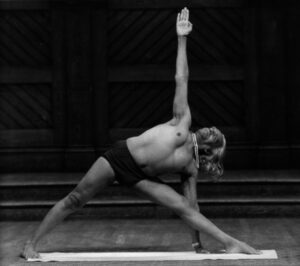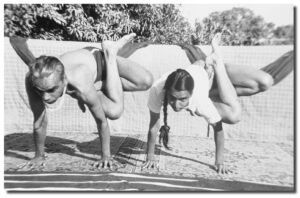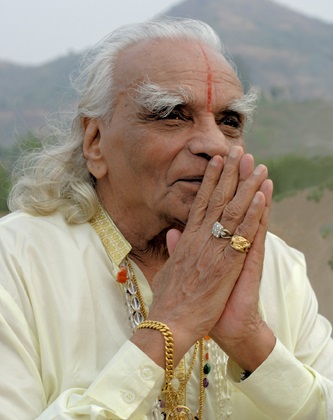Iyengar yoga is named after Bellur Krisnamachar Sundararaja (BKS) Iyengar who dedicated his life to practising and teaching yoga and was instrumental in bringing yoga to the West.
Iyengar yoga, not named as such by Mr Iyengar who referred to Patanjali’s yoga, but rather by those who practice it, is characterised by the precision and attention to detail, which enables the student to progress safely within the limits of their own capability.
Classes are varied each week and involve alignment and extension, with students feeling lighter and calmer. The immediate benefits are greater flexibility, strength, improved health and a quieter mind.
Props, which were first developed by Mr Iyengar and are now used across many yoga styles, are used to help students work safely with the correct action to achieve their full potential.
BKS Iyengar
During his lifetime (1918 – 2014), Mr Iyengar – also known fondly by his students as Guruji – developed a method of hatha yoga focusing on alignment and attention to detail. He closely followed the Yoga Sutras (196 aphorisms) written by the Sage Patanjali approximately 2,500 years ago.
Iyengar was a sickly child and was advised to start yoga in his teens to improve his health. He studied under his brother-in-law, the Guru Krishnamacharya, whom he travelled with giving demonstrations and started teaching in Pune in 1937.
In 1954 the famous violinist, Yehudi Menuhin, became Iyengar’s pupil. Menuhin declared Iyengar to be “his greatest violin teacher ever” and arranged a tour of Europe, including London.

In 1968, what then became known as Iyengar yoga was introduced on the Inner London Education Authority syllabus and has since been developed and taught in more than 45 countries. In 1973 the Ramamani Iyengar Memorial Yoga Institute (RIMYI) was built in Pune and named in memory of his wife who died before it was completed. His most well known book, Light on Yoga was published in 1966.
Following his death in 2014, BKS Iyengar left a legacy of his teaching and practice behind. He had developed an ability to observe the fine changes that are brought about by minute movements and the subtle mental and physical effects of each pose and their adjustments. His family continued to lead and teach at the Institute, headed by his daughter, Geeta and son, Prashant.

Geeta died in December 2018 and like her father had dedicated her life to the practice and teaching of yoga and is recognised for her knowledge on women and yoga and her acclaimed book published in 1983, Yoga: A Gem for Women.
Prashant and Abhijata Iyengar, the granddaughter of BKS Iyengar, jointly lead the Iyengar community from RIMYI.
Benefits
Iyengar yoga has multiple benefits, including:
- increasing strength, stamina, flexibility and immunity
- relieving aches and pains, especially lower backache
- relieving stress, anxiety and depression and sleep problems
- improving blood circulation
- lowering the risk of heart disease
- helping memory, concentration and balance
- reducing respiratory problems
- helping in weight loss
Iyengar yoga teachers
All certified teachers of Iyengar yoga are trained to high standards and are fully ensured. The Certification Mark means teachers have completed at least three years of regular practice as students before starting teacher training or mentoring.
All qualified teachers are expected to maintain contact with the Iyengar family through senior teachers and exchange of learning days to qualify for continued use of the Certification Mark which is a guarantee of excellence, clarity and depth of understanding.
